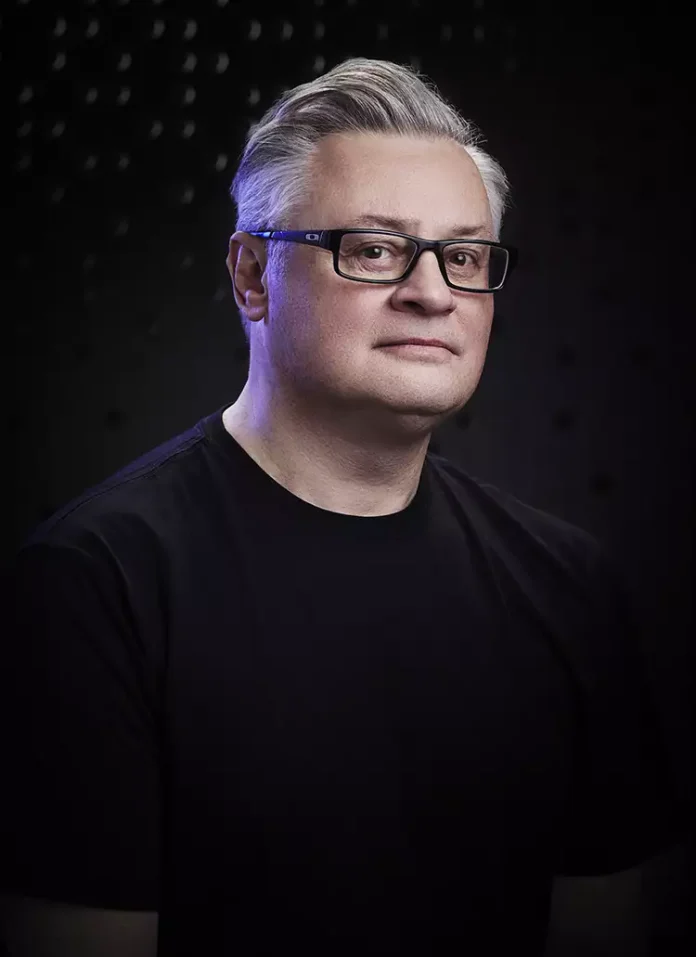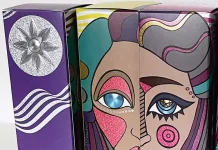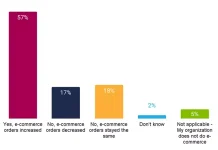The Cog team is on a mission: help brand packaging reach its fullest potential. Or create, as it calls it, “genuinely awesome packaging.” That’s what it’s been doing since launching in 2010. The consumer packaging development and prototyping company in Cincinnati, Ohio, has partnered with big brands to create eye-catching packaging solutions. Geared for consumer delight, speed to market and cost avoidance – the team at Cog prides itself as being a partner to its clients by fitting in with the design-to-print process, not taking it over. As the company’s value proposition says, “More than a vendor, Cog is a partner who works alongside you to achieve awesomeness.”
David Lukshus is partner and chief executive officer and a proud Cog. Lukshus recently got together with PostPress to discuss his business, the biggest challenges in the print packaging industry and his predictions for where the industry is going.
How did your career develop in the packaging industry? Tell us about how Cog started and the reasons for starting the company.
I started my career in advertising and design in New York City. It was 10 years later, when I joined Procter & Gamble as a design manager for Print and In-Store Promotion, that I first experienced how multiple creative platforms are created and executed from a single client’s perspective. And, the truth is, there was little in the way of integration between creative and design disciplines – for example, there was little integration between print and broadcast advertising and packaging. That’s when it first hit me: I realized that no one was responsible for imagining and coordinating the possibilities between consumer-targeted creative and design initiatives. That’s when the idea of “Cog” began. Transferring momentum from one gear wheel to the next is what cogs are designed to do.
I officially started Cog in 2010 with two partners and with the intention of offering a hybrid of design and production capabilities for the in-store point-of-purchase industry. Entering the packaging industry was a year three objective, but when our first contract came from the research and development (R&D) packaging organization of a global Fortune 100 consumer packaged goods company, all best laid plans were laid to rest. We were brought on board – literally on-site – to provide upstream packaging engineers and scientists the ability to identify, explore and verify innovative “decoration” (their word for embellishments and finishes) options for consumer packaging. I quickly discovered two realities about supporting “upstream” packaging initiatives: 1) I had no idea what “upstream” truly entailed in the consumer packaging industry, and just how much time it takes for a packaging innovation to make it to market, and 2) hardly any of our comp and mock-up competitors were servicing upstream packaging development – probably because they were focused on revenue from printing larger volumes associated with go-2-market initiatives.
From our beginnings in R&D, we all saw the potential to provide “momentum” to larger stakeholders, such as packaging designers, printers/converters, and substrate and embellishment manufacturers, further downstream. And, to represent them or bring them to the brand marketer – designer table. Now, Cog supports various key stakeholders in the design-to-print continuum, from helping to ensure printing and manufacturing feasibility of a really cool packaging design to exploring and verifying innovative printing and embellishment technologies.
What do you see as the biggest challenges in the print packaging industry currently? How should the industry respond to successfully grow and thrive?
More of a concern than a challenge, packaging designers who are in the first 10 years of their careers do not know how to design for digital printing or effectively incorporate visual and tactile embellishments into their work. From my perspective as a former designer and a current business owner of Cog, packaging design has become too specialized. At the risk of sounding like a “boomer” pining about how things were better back in the day (they weren’t!), designers and art directors of my generation were expected to demonstrate, or at least aspire to, mastery across a wider range of skills than, first and foremost, substrates, finishes and printing. Corporate-driven decoupling of “digital production” from the creative/design agencies adversely impacted in-store agencies and packaging design firms, became the new reality between 2007-2010. And, ever since, creative and design presentations have relied on what Adobe Illustrator and Photoshop do best. I’d feel better if I saw more designers incorporating embellishments, printer/converter capabilities and new printing technologies from the onset. (Then again, if they did, there might not be a demand for Cog).
How do you see the industry embracing global trends such as the circular economy and sustainability demands from brand owners and consumers?
From what Cog is hearing from packaging R&D and design customers, sustainability is the only topic on everyone’s mind. “Go ahead and pitch your next great packaging idea,” said Ken McGuire, research fellow at Procter & Gamble, “but the only ones that our customers are waiting for and listening to are about sustainability.” For perspective on how far our customers’ priorities, as well as all of our attitudes, have evolved, 10 years ago we were all snickering at Seventh Generation. It’s now considered a leader in sustainable packaging and a premium brand. And rightly so.
What trends are emerging in design and production that will influence the future of the print packaging industry?
Personalization and embellishments are trends that are emerging and will continue to do so. In the end, a consumer package or direct-to-consumer initiative needs to achieve consumer delight to stand out. This is especially true for challenger brands. Substrate and embellishment manufacturers and printers are ready to help brands move the needle. But are designers? (See “Challenges” two sections above.)
Which markets/verticals are growing in the use of embellishments for their packaging? Why do you believe there continues to be growth in the use of processes, such as metallics and specialty coatings for label and carton packaging?
Every consumer-packaged goods market/vertical that I know of has established value-based tiers. As long as “premium” exists as a brand offering and tier, there will be a need for embellishments. Said another way, premium brands must ignite a sensory experience for consumers. We Cogs call this “achieving consumer delight.” While the definition of “premium” differs depending on the market/vertical (e.g., fabric conditioners vs. confections vs. fragrance, etc.), brand owners and packaging designers rely on embellishments to help convey that a packaged product is of high quality and that the product price point supports their usage.
What are your predictions for the print packaging industry in the next five to 10 years?
I believe the print packaging industry will be most influenced by countries that demonstrate leadership in demanding and establishing eco-friendlier and sustainable packaging. Their standards will lead the way, and non-adopters will suffer. I also see a dramatic increase in efforts to decrease the adverse impact of packaging by improving recycling, educating consumers, reimagining packaging and more. Molded paper has a future as well, as long as the energy requirements can be lowered. But, in the end, if we just get behind forward thinkers such as Kate Christian (Eco Cycle) and Michael Ferrari (Consortium for Waste Circularity), we’ll all be focused on the true prize – true sustainable solutions.





